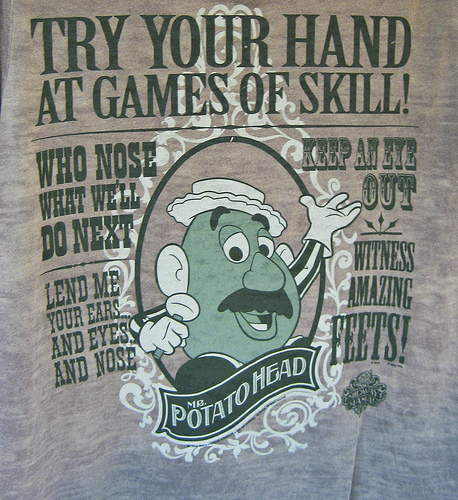Poker promotions are the lifeblood of retention marketing (e.g. keeping existing players playing). It seems like a complicated task but in reality it’s really straightforward if you understand how they work.
There are a few basic types of promotions a poker room can run:
• Luck Based Promotions
• Performance Based Promotions
• Hybrid
Luck based promotions reward players for something that is beyond their control. For instance, PartyPoker recently ran a promotion called The Genius (I’m going to bet my friend J-Dawg came up with this name) where every 50,000 hand they squared the size of the pot. You can’t really do anything to win other than play. Even a donkey who only plays one hand could potentially win.
Performance based promotions reward players for doing something. If you do X we will give you Y. The funny part is for your core players this is exactly what they want but most poker rooms insist on creating overly complex permeations which completely turn players off.
A good example of a performance based promotion would be a deposit bonus. If you deposit X dollars and play Y number of hands we will give you Z dollars.
Probably one of the best performance based promotions I’ve run across is Full Tilt’s Iron Man Challenge. Although they’ve added tiers for different types of players the proposition is quite simple; if you earn X points per day for Y number of days per month we will give you Z reward.
The hybrid promotion is typically the worst type of promotion. Either it involves a luck component to qualify for a performance based promotion or it starts off as a performance based promotion and becomes luck based after the player has achieved the performance goal. An example of this type of promotion would be if you play X number of hands you are given an entry into a freeroll for Y dollars.
The reason this is such a horrible proposition for players is that your recreational players probably won’t achieve the goal and your hard-core players will realize that the luck factor basically destroys any sort of equity or edge in the promotion.
That’s it. It’s really that simple. Now anybody who knows the rules of poker can become a poker room manager.
Actually, there is a little more to this. First off, you have to come up with something catchy to tie the promotion around. Like the previously mentioned “The Genius” promotion it has to have a theme. The theme could be pulled from current events like sporting events. You could also have a general concept like “Insomniac” where players have to keep playing longer hours to earn the highest payouts.
Second, you have to understand who it is that you’re marketing to. One of the things that always drags a promotion planning meeting into purgatory is trying to be all things to all people. Your recreational players don’t really respond well to performance based promotions. That’s not why they play poker. They don’t want to play every day just to win a prize. You have to face the fact that they aren’t your target market for that type of promotion. If you try to make a promotion that appeals to both the recreational and hard-core players you’ll come up with something that neither group likes.
For instance, one debate that I often hear revolves around luck based promotions. Someone will come up with an idea for a luck based promotion and then ask how big the prize needs to be to attract the hard-core players. Who cares? A guy who rakes $10,000 a month doesn’t care about a $2500 lucky chance. He knows the approximate odds and knows that there is little advantage to changing his behavior in order to chase the promotion. Unless you’re talking about astronomical amounts of money your hard-core players have no incentive to take part in the promotion.
That’s why bad beat jackpots only draw any sort of interest from hard-core players when the prize pool becomes massive. Then everybody jumps down in limits and plays more tables in the hopes of hitting a hand that will pay off. And you can tell exactly what is going on because the rake per raked hand and number of raked hands drops like a rock. Players are only playing hands that could qualify for the bad beat jackpot and they’re folding everything else. If the requirement is to have quad 8’s or better beat by a better hand people who are chasing the jackpot are folding all pocket pairs lower than 8. For a guy who normally plays four tables of $10/$20 when he drops down to .05/.10 and opens up 20 tables he really doesn’t care about catching a set with his pocket fives. He’s playing for the bad beat jackpot.
Third, you need to understand the intended and unintended consequences of your promotions. As with the bad beat jackpot example above, when the jackpots get big your best players drop down to the smallest limits and play more tables hoping to pick up a qualifying hand. Overall rake goes down because players are playing smaller limits and playing tight even though the overall number of hands dealt increases dramatically. Basically, you need to be able to ask yourself “As a player, how would I change my behavior in order to maximize my win?”
Fourth, you need to understand that you can’t target one player profile and then reward them with a prize that is contingent on them switching their playing style. For example, one thing I heard back from many cash game players was that they had no interest in promotions where the prize was a tournament entry or some sort of tournament freeroll. Why? Because they’re cash game players! Making them compete for a prize in a tournament holds little value to them.
Lastly, you need to run promotions focused on all your key target groups. This is closely tied to the second point in that you can’t have a promotion that appeals to hard-core players and recreational players. What you need to do is to run one promotion focused on the recreational players that is fun and gets them excited and another promotion that’s aimed at your more hard-core players that rewards them for achieving goals.
For the most part, retention marketing is like any other type of marketing in that it’s both an art and a science. The science part is easy to understand. You do something, you measure how it performs, and then you make adjustments based on your findings. But the art of it is coming up with ideas that will appeal to your players.
Poker room managers / retention managers who actually get it are fairly rare. If you really examine various promotions you can see how derivative they are of each other. The more successful poker rooms are constantly innovating and pushing new ideas and new concepts. Everyone else is following along sometimes without even understanding what made the target of their plagiarism successful in the first place.
Photocred to Mary Witzig


@Sean: I’ve always thought it best to target both groups each month. Running different promotions aimed at each group rather than trying to run one big promotion that is supposed to appeal to everyone (and most likely doesn’t).
Great post and I couldn’t agree more. As a regular cash game player that never plays tournaments, I am often frustrated at the “promotions” run that are apparently aimed at regulars for the site because they rarely fit this core group of player.
I think I’d be a lot more forgiving of promotions if I new that the site had some sort of plan aiming to make promotions aimed at various audience group types on a rotational basis. Afterall, if more recreational players are brought to the site, the regulars will never have a problem with it … however if there’s never a promotion catering to them, they’ll feel neglected and start to think that the grass might be greener with a competitor poker room where they do often promotions for their core group of players.